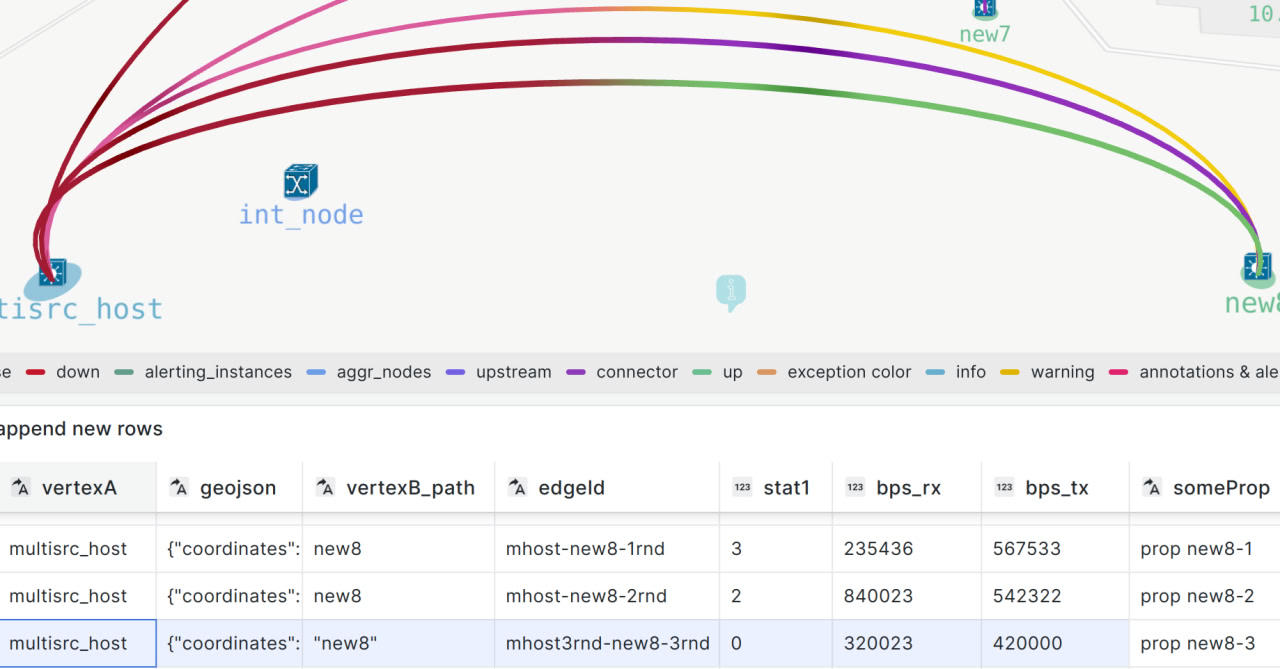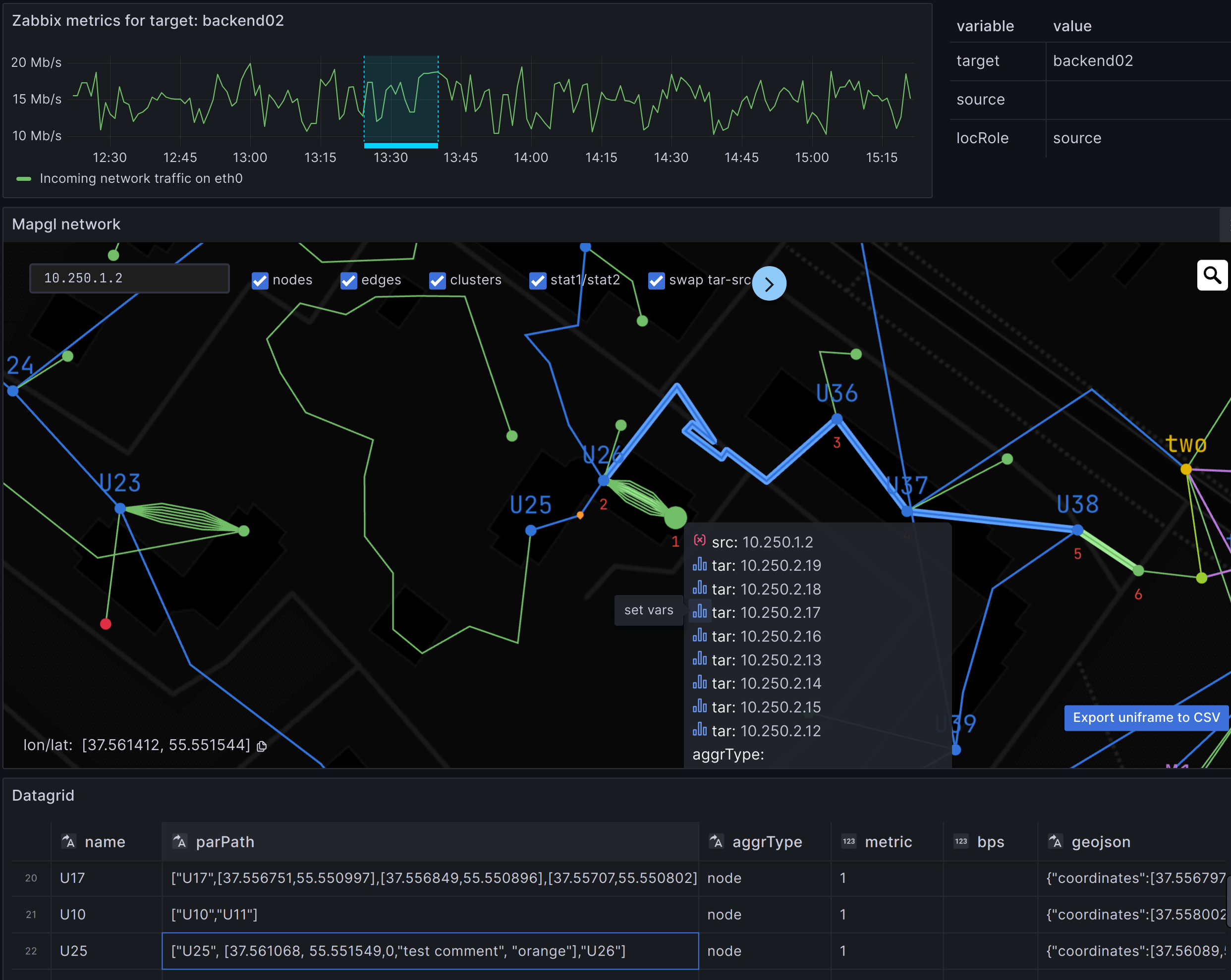Network graph & geomap with metrics#
📡 Physical Topology#
- Device-to-device links aggregated into fiber optic lines (FOLs)
- Exact routes with segment comments
🧠 Logical Topology#
- Interfaces of connected devices with gradient load visualization
- Device statuses
- Cluster icons with aggregated status info by groups of devices
- Layers for any task: markers, lines, arcs, polygons
- Node graph with auto-layout on a non-geo (abstract) basemap
🎛️ Grafana Field Config#
Thresholds– value ranges with associated colors to visually indicate statusMapping– rename displayed valuesUnits– measurement unit conversionOverrides– custom settings for specific metricsDataLinks– links to external dashboards or graphs
Style colors, marker sizes, line width and icons dynamically with value-based rules that can apply globally or be overridden per field or device group
📄 Required Data Format#

Each source dataframe record should contain:
coordinatesof the device or node. Non-geo (abstract) node graph layout is autogenerated.parent idor a full path with intermediate node IDs or coordinatesedge idis optional. Used to support parallel connectionsstatusmetrictransmitandreceivemetrics for link load
🛠️ Data Preparation#
Use Grafana’s built-in transformations to prepare and merge data from:
- Postgres
- Prometheus
- Zabbix
- Any datasource
Tutorial: Observing Zabbix events on a Geospatial Map Netbox+Prometheus with datalinks demo
🕹️ Demo Playground#
Explore interactive Grafana panels with open configuration
💲 Plugin Tiers#
Compare available features across plans
📸 Screenshots#




